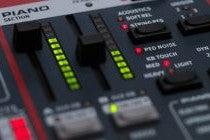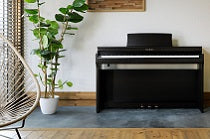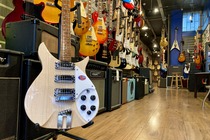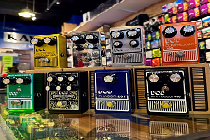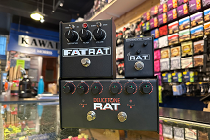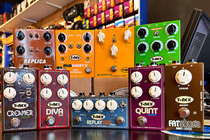Delay pedals can be daunting to the uninitiated, with many units seemingly too complicated to coax a usable sound from. Others are maybe uninterested with what the delay pedal has to offer. This is a shame as the delay pedal is one of the most versatile effects in a guitarists arsenal. Here are three alternative ways to use yours.
Firstly, and most simply, A short slap-back echo with multiple repeats can be used to emulate the classic splash of a spring reverb tank. This is particularly useful when playing through a dry amp in rehearsal space or a small boxy club, to breath life into your sound. Set your feedback to 3-5 repeats, effect level to about half way and your rate very short (around 100-300 milliseconds).
Firstly, and most simply, A short slap-back echo with multiple repeats can be used to emulate the classic splash of a spring reverb tank. This is particularly useful when playing through a dry amp in rehearsal space or a small boxy club, to breath life into your sound. Set your feedback to 3-5 repeats, effect level to about half way and your rate very short (around 100-300 milliseconds).
Similarly, you can coax a cool doubling effect from a delay pedal and with a short enough repeat time you can even move into chorus and flange territory. This can be great for fattening up your tone, without going into full on modulation. This is essentially how the flange effect was initially discovered, using two tape units playing in unison and slowing down one by pressing down on the rim of the play-out reel (also known as the flange). Just set your level to unity, feedback to one repeat, and your delay time as short as possible, playing around with it till you get a sound that works for you. this works particularly well with a digital delay.
Finally, there's all sort of fun that can be had with self oscillation. This is where the repeats are set to a level that creates a infinite feedback loop. This works best with a analog delay. Set your delay rate to as long as possible then as the feedback cascades, back it off to 0, all the while riding the effect level to balance out the increasing volume. This effect when combined with other effects, like fuzz or chorus can create amazing soundscapes, commonly utilized by Hendrix and Radiohead.
Finally, there's all sort of fun that can be had with self oscillation. This is where the repeats are set to a level that creates a infinite feedback loop. This works best with a analog delay. Set your delay rate to as long as possible then as the feedback cascades, back it off to 0, all the while riding the effect level to balance out the increasing volume. This effect when combined with other effects, like fuzz or chorus can create amazing soundscapes, commonly utilized by Hendrix and Radiohead.
As with anything, there's lots of room to play around with these sounds and create new ones. The key is to treat your delay as its own instrument.

